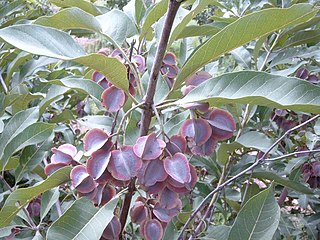
Combretum, the bushwillows or combretums, make up the type genus of the family Combretaceae. The genus comprises about 272 species of trees and shrubs, most of which are native to tropical and southern Africa, about 5 to Madagascar, but there are others that are native to tropical Asia, New Guinea and the Bismarck Archipelago, Australia, and tropical America. Though somewhat reminiscent of willows (Salix) in their habitus, they are not particularly close relatives of these.

Menispermaceae is a family of flowering plants. The alkaloid tubocurarine, a neuromuscular blocker and the active ingredient in the 'tube curare' form of the dart poison curare, is derived from the South American liana Chondrodendron tomentosum. Several other South American genera belonging to the family have been used to prepare the 'pot' and 'calabash' forms of curare. The family contains 78 genera with some 440 species, which are distributed throughout low-lying tropical areas with some species present in temperate and arid regions.

Cocculus is a genus of four species of woody vines and shrubs, native to tropical and subtropical regions of Africa and Asia.

Friedrich Ludwig Emil Diels was a German botanist.
Anonidium is a genus of plant in family Annonaceae.

Polyalthia is a genus of flowering plants in the family Annonaceae. There are approximately 90 species distributed from Africa to Asia and the Pacific.

Artabotrys is a genus of plants in the Annonaceae family. There are over 100 species in the Old World tropics, with 31 species in Africa. It is part of the custard apple family (Annonaceae). All species are small trees or shrubs with a tendency to climb. Leaves are simple and alternate, without hairs. Bisexual flowers are borne singly or in clusters opposite the leaves. The 6-petalled flowers are scented, and the plant bears fleshy fruits.
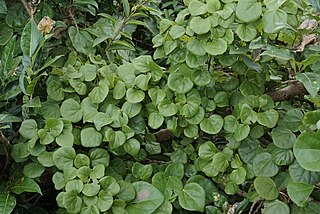
Diploclisia glaucescens is a species of flowering plant. It is an extensively spreading climber found in South Asia, Southeast Asia, China, Indonesia and the Philippines.

Huberantha is a genus of plants in the family Annonaceae and tribe Miliuseae. It is distributed in Australia, tropical Asia, East Africa and some Pacific islands. Tanawat Chaowasku named the genus "Huber's flowers" in honor of the German botanist Herbert Huber and to highlight its flowers as a distinguishing feature of the genus. A number of species have been moved here from the genus Polyalthia.
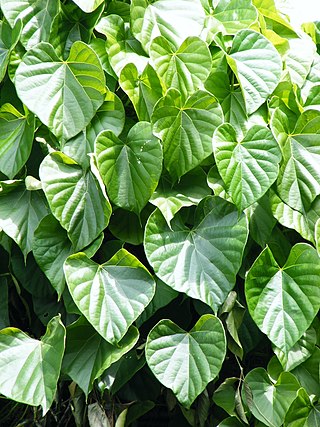
Tinospora is a genus of flowering plants. Its species have a succulent, woody, climbing shrub habit. Thirty-four species are currently recognized. Species generally send down long aerial roots from host trees. They have corky or papery bark. They are found in tropical and sub-tropical parts of Asia, Africa and Australia. The most common species are T. cordifolia and T. crispa.
Albertisia is a genus of flowering plants belonging to the family Menispermaceae.
Cleistopholis is a genus of flowering plants belonging to the family Annonaceae.

Pachygone is a genus of flowering plants belonging to the family Menispermaceae.
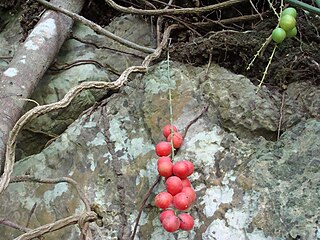
Disciphania is a genus of flowering plants belonging to the family Menispermaceae.
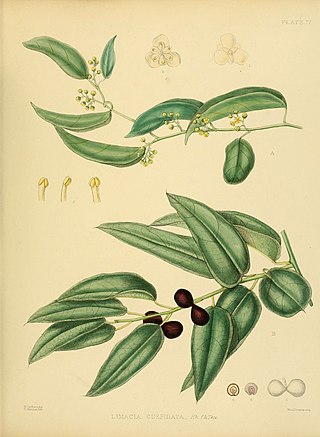
Hypserpa is a genus of flowering plants belonging to the family Menispermaceae.
Neosepicaea is a genus of flowering plants belonging to the family Bignoniaceae.
Parabaena is a genus of flowering plants belonging to the family Menispermaceae.
Rhaptonema is a genus of flowering plants belonging to the family Menispermaceae.

Chenopodium preissii is a plant in the Amaranthaceae family, native to Western Australia and South Australia.













